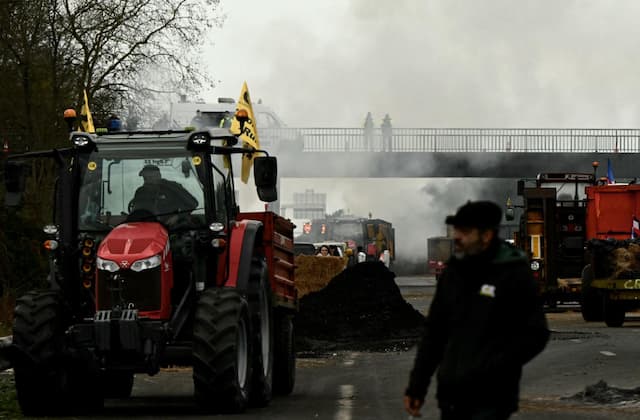Planet: CO2 at its Highest for Three Million Years

CO2, the main cause of global warming, has never been so concentrated in the atmosphere in the last three million years.
The concentration in the atmosphere of CO2 , the main cause of global warming, is at its highest since 3 million years. It thus makes the dramatic increase of the temperature of the planet and the level of the oceans inevitable in a few centuries, warn researchers.
Scientists previously estimated that the current level of carbon dioxide, just over 400 parts per million (ppm), was no greater than that of 800,000 years ago, during a significant period of time. by cycles of warming and cooling of the Earth that would continue today without the warming related to human activities.
Trees in Antarctica
But ice cores and marine sediments taken from the coldest part of the planet now reveal that the 400 ppm bar was actually exceeded for the last time 3 million years ago, during the Pliocene. The temperatures were then 3 to 4 ° C higher, trees were growing in Antarctica and the ocean level was 15 meters higher.
These analyses are corroborated by a new climate model developed by the Potsdam Institute for Climate Impact Research (PIK).
“The end of the Pliocene is relatively close to us in terms of CO2 levels,” says AFP Matteo Willeit, a PIK researcher and lead author of a study published this week.
About + 3 ° C
“Our models suggest that at there were no glacial cycles or large ice caps in the northern hemisphere. The CO2 was too high and the climate too hot to allow it.
The 2015 Paris Climate Agreement aims to limit global warming to + 2 ° C, or even + 1.5 ° C, compared to the pre-industrial era.
But in 2017, greenhouse gas emissions surpassed all records in human history, and the commitments of the signatory states of the Paris Agreement would lead the world to + 3 ° C.
Oceans 15 to 20 meters higher
For researchers gathered this week in London, there are lessons to be learned from the Pliocene.
“Global temperatures were 3 to 4 ° C higher than today and sea level 15 to 20 meters higher,” said Martin Siegert, professor of geoscience at Imperial College London.
Today, with 1 ° C more than in the pre-industrial era, the Earth is already experiencing the impacts of climate change, from floods to droughts.
For Siegert, having exceeded 400 ppm of CO2 does not imply an increase in the sea level of the magnitude of that of the Pliocene imminently, but unless humans can remove CO2 from the atmosphere at large scale, major impacts are inevitable, sooner or later.
“It does not stop at 2100”
Based on the CO2 concentrations, glaciologists predict an increase in ocean level between 50 cm and one meter by the end of this century, says the researcher.
“It would be difficult to be more, because the melt takes time. But it does not stop at 2100, it continues.
In October, Giec scientists sounded the alarm: to stay below 1.5 ° C, we should reduce CO2 emissions by nearly 50% by 2030.
But despite the promises, these emissions related to fossil fuels and agriculture are inexorably increasing.
“At 400 ppm, we are on the path of a Pliocene-like climate,” warns Tina van De Flierdt, professor of isotope geochemistry at Imperial College.
Greenland’s icecap, which contains enough water to raise sea levels by 7 meters, had disappeared. And that of western Antarctica, “which contains about 5 meters, had probably disappeared”.
“Crazy experience”
The researchers estimate that the atmosphere has previously had CO2 levels well above 400 ppm, but the gas has taken millions of years to accumulate.
For their part, emissions related to human activity have boosted CO2 levels by more than 40% in a century and a half.
With a concentration of 412 ppm, and rising, some experts believe that a global warming of 3 to 4 ° C is probably unavoidable.
The last time CO2 was in the atmosphere, it was then captured by trees, plants, animals, and buried with them when they died.
“And what we’ve been doing for 150 years is digging it up and sending it back into the atmosphere,” says Siegert. “It’s a crazy experience.”
Enjoyed this? Get the week’s top France stories
One email every Sunday. Unsubscribe anytime.


